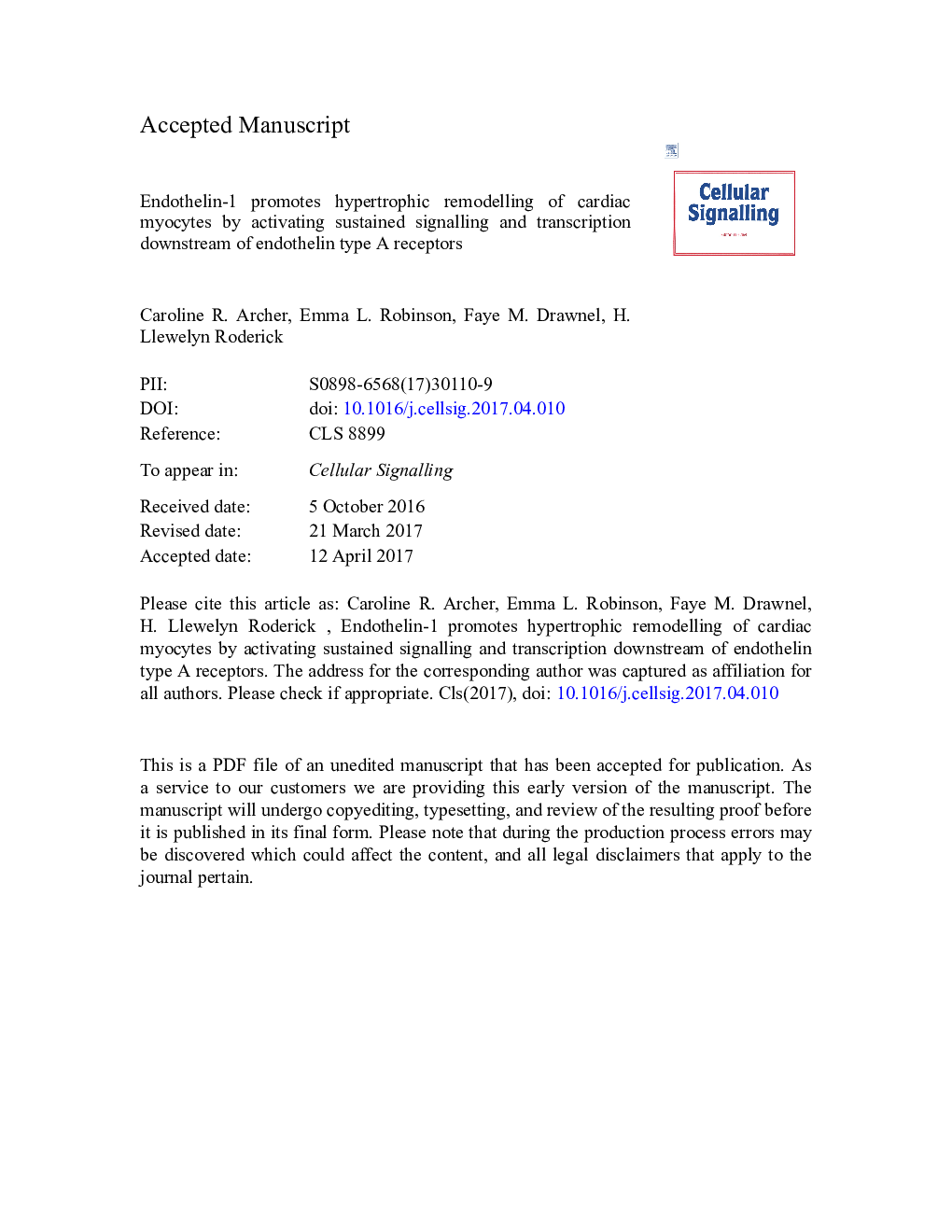| Article ID | Journal | Published Year | Pages | File Type |
|---|---|---|---|---|
| 5509232 | Cellular Signalling | 2017 | 37 Pages |
Abstract
G-protein coupled receptor (GPCR) mediated activation of the MAPK signalling cascade is a key pathway in the induction of hypertrophic remodelling of the heart - a response to pathological cues including hypertension and myocardial infarction. While levels of pro-hypertrophic hormone agonists of GPCRs increase during periods of greater workload to enhance cardiac output, hypertrophy does not necessarily result. Here we investigated the relationship between the duration of exposure to the pro-hypertrophic GPCR agonist endothelin-1 (ET-1) and the induction of hypertrophic remodelling in neonatal rat ventricular myocytes (NRVM) and in the adult rat heart in vivo. Notably, a 15 min pulse of ET-1 was sufficient to induce markers of hypertrophy that were present when measured at 24 h in vivo and 48 h in vitro. The persistence of ET-1 action was insensitive to ET type A receptor (ETA receptor) antagonism with BQ123. The extended effects of ET-1 were dependent upon sustained MAPK signalling and involved persistent transcription. Inhibitors of endocytosis however conferred sensitivity upon the hypertrophic response to BQ123, suggesting that endocytosis of ETA receptors following ligand binding preserves their active state by protection against antagonist. Contrastingly, α1 adrenergic-induced hypertrophic responses required the continued presence of agonist and were sensitive to antagonist. These studies shed new light on strategies to pharmacologically intervene in the action of different pro-hypertrophic mediators.
Keywords
NRVMsα-MHCdpmβ-MHCANFIEGendothelin type B receptorBNPDusp6ET-1GPCRGPCRsSRFPD184352MEF2TACTCAECCNFATECeERK1/2G-protein coupled receptorMAPKNeonatal rat ventricular myocytesAra-CEndothelin converting enzymeAngiotensin IItrichloroacetic acidendothelin-1excitation contraction couplingactinomycin Dcardiovascular diseasedisintegrations per minutetransverse aortic constrictionAng IICVDSignallingmyocyte enhancer factor-2Nuclear Factor of Activated T Cellsatrial natriuretic factorserum response factorAct DCardiac hypertrophymitogen activated protein kinaseimmediate early geneCalcineurinextracellular signal-regulated kinase 1/2ETA receptorETB receptorendothelin type A receptor
Related Topics
Life Sciences
Biochemistry, Genetics and Molecular Biology
Biochemistry
Authors
Caroline R. Archer, Emma L. Robinson, Faye M. Drawnel, H. Llewelyn Roderick,
